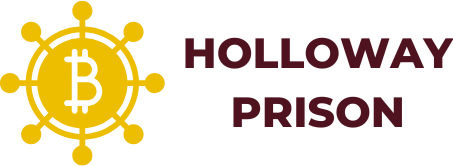In a world where distractions lurk around every corner, productivity software swoops in like a superhero, ready to save the day. Whether it’s keeping track of tasks or streamlining communication, these digital tools are designed to help people work smarter, not harder. Imagine slaying your to-do list faster than a caffeine-fueled squirrel on a mission!
Table of Contents
ToggleOverview of Productivity Software
Productivity software encompasses a wide array of tools designed to enhance workflow and efficiency. These applications support task management, communication, and collaboration among teams. Individuals utilize these tools to organize schedules, set reminders, and track project progress.
Task management software allows users to create, assign, and monitor tasks. Examples include Asana and Trello, which offer easy-to-use interfaces. Communication tools such as Slack and Microsoft Teams streamline conversations across teams, fostering a connected work environment.
Collaboration software plays a crucial role in productivity. Google Workspace and Microsoft 365 allow users to co-edit documents in real time. These platforms reduce email chains and improve document sharing, making it easier to keep everyone on the same page.
Time management features in productivity software assist in prioritizing tasks. Apps like Todoist and RescueTime help users analyze time spent on various activities. Understanding where time is allocated enables better decision-making regarding task organization.
Reporting and analytics functionalities provide insights into productivity patterns. Tools like Monday.com and ClickUp offer dashboards that visualize progress and highlight bottlenecks. These data-driven insights empower users to optimize their workflows.
Security should not be overlooked in productivity software. Many tools prioritize data protection with encryption and user authentication. Utilizing secure platforms enhances trust among team members and protects sensitive information.
Integration capabilities allow users to connect various apps seamlessly. Platforms like Zapier enable automation between different services. This streamlines processes and reduces repetitive tasks, enhancing overall productivity.
Types of Productivity Software
Various types of productivity software enhance efficiency and streamline workflows. These tools range from task management to collaboration solutions, catering to diverse needs in the workplace.
Task Management Tools
Task management tools simplify organizing daily workloads. Platforms like Asana and Trello enable users to create and assign tasks efficiently. Users can monitor deadlines and progress, ensuring accountability among team members. These applications often feature priority levels to keep essential tasks front and center. Additional functionalities, such as project templates and checklists, help maintain a structured approach, promoting successful project completion.
Time Tracking Applications
Time tracking applications assist individuals in managing their schedules effectively. Tools like Todoist and RescueTime provide insights into time allocation, promoting better focus on important tasks. Users can set timers to work in concentrated intervals, which helps increase productivity. Features like goal-setting and progress analysis encourage continuous improvement in time management skills. These applications contribute to a clearer understanding of daily habits, allowing for adjustments as necessary.
Collaboration Software
Collaboration software fosters teamwork and enhances communication among members. Solutions like Google Workspace and Microsoft 365 allow real-time document editing, reducing reliance on email chains. Teams can share files seamlessly, allowing for quicker feedback and decision-making. Integrated chat and video conferencing features streamline discussions and support remote work. Enhanced collaboration leads to improved project outcomes and more cohesive teams, ultimately driving success in various projects.
Key Features to Consider
Productivity software offers various features that significantly impact usability and effectiveness. Two crucial aspects are user interface and integration capabilities.
User Interface and Experience
Design matters in productivity software. An intuitive layout enhances user engagement and minimizes learning curves. Simple navigation ensures users can quickly access features without frustration. Customization options allow individuals to tailor the interface to their preferences, improving satisfaction and efficiency. Visual aids like progress bars and checklists help users track tasks easily. Each of these elements contributes to a smoother overall experience, making it easier for users to remain focused on their tasks.
Integration Capabilities
Integration capabilities play a vital role in maximizing software effectiveness. Many productivity tools can seamlessly connect with applications like Google Drive, Dropbox, or email clients. This compatibility allows users to consolidate workflows and eliminate redundant processes. Robust integration with third-party tools, such as calendar apps and CRM systems, streamlines task management and improves collaboration. When team members can share information across platforms, project completion becomes more efficient. These integration features ultimately save time and enhance overall productivity.
Popular Productivity Software Options
Numerous productivity software options cater to various business needs. Each tool offers unique features that help users enhance their workflows.
Microsoft Office Suite
Microsoft Office Suite remains a leading choice for many businesses. It includes familiar applications like Word, Excel, and PowerPoint, which facilitate document creation, data analysis, and presentations. Collaboration features, such as real-time editing with co-workers, promote teamwork and efficiency. Additionally, integration with Microsoft Teams streamlines communication, allowing users to connect discussions directly within documents. This software’s versatility supports both individual projects and team collaborations, making it an essential tool in any office environment.
Google Workspace
Google Workspace has gained popularity due to its cloud-based capabilities. Applications like Google Docs and Sheets enable users to create and edit documents from anywhere with internet access. Real-time collaboration enhances productivity as team members can work simultaneously. Built-in communication tools, such as Google Meet and Chat, ensure seamless discussions while working on projects. Furthermore, integration with third-party applications expands its functionality, making Google Workspace an adaptable solution for businesses of all sizes.
Trello and Asana
Trello and Asana excel as task management tools, helping teams organize projects effectively. Trello uses a visual board system, allowing users to move tasks through various stages easily. This flexibility promotes clarity around project progress. Asana offers a more structured approach, featuring lists, timelines, and task assignments for comprehensive project tracking. Both tools prioritization through deadline settings and project milestones boosts accountability among team members. Their integration capabilities enable connections with other applications, enhancing the overall productivity experience.
Best Practices for Maximizing Productivity
Organizing tasks effectively enhances productivity. Implementing prioritized task lists helps individuals focus on critical assignments first, ensuring essential responsibilities gain attention. Regularly reviewing these lists demonstrates efficiency and fosters accountability.
Time blocking serves as a powerful technique. This strategy involves dedicating specific time slots for different activities, such as meetings or project work, allowing users to minimize distractions and enhance focus. Establishing routines around these time blocks supports consistent output.
Utilizing project management tools, like Asana or Trello, promotes collaboration among team members. Clear task assignments with deadlines encourage ownership and transparency in ongoing projects. Frequent check-ins through communication tools, such as Slack or Microsoft Teams, boost engagement while keeping everyone aligned.
Investing in time tracking software, such as Todoist or RescueTime, aids in analyzing productivity patterns. By recognizing time allocation, individuals can make informed adjustments that promote focused work intervals. This data-driven approach significantly optimizes workflow.
Maintaining data security must also factor into productivity strategies. Choosing software with robust encryption features ensures sensitive information remains protected from potential breaches. Implementing user authentication measures safeguards against unauthorized access.
Integration capabilities streamline workflows between applications. Using platforms like Zapier to connect various tools eliminates repetitive tasks, enhancing productivity potential. Seamless transitions between different software exponentially increase efficiency.
Incorporating user-friendly interfaces encourages sustained engagement. A well-designed layout minimizes the learning curve while making features easily accessible. Customization options further enhance user experience, tailoring software to individual preferences.
Productivity software is a vital asset in today’s fast-paced work environment. By simplifying task management and enhancing communication, these tools empower individuals and teams to achieve their goals more efficiently. With various options available, from Microsoft Office Suite to Google Workspace, users can find solutions tailored to their specific needs.
Emphasizing effective organization and time management practices can further amplify the benefits of these applications. By leveraging the features of productivity software, such as integration capabilities and user-friendly interfaces, users can minimize distractions and focus on what truly matters. Ultimately, embracing these digital tools can lead to improved productivity and better outcomes in both personal and professional settings.





